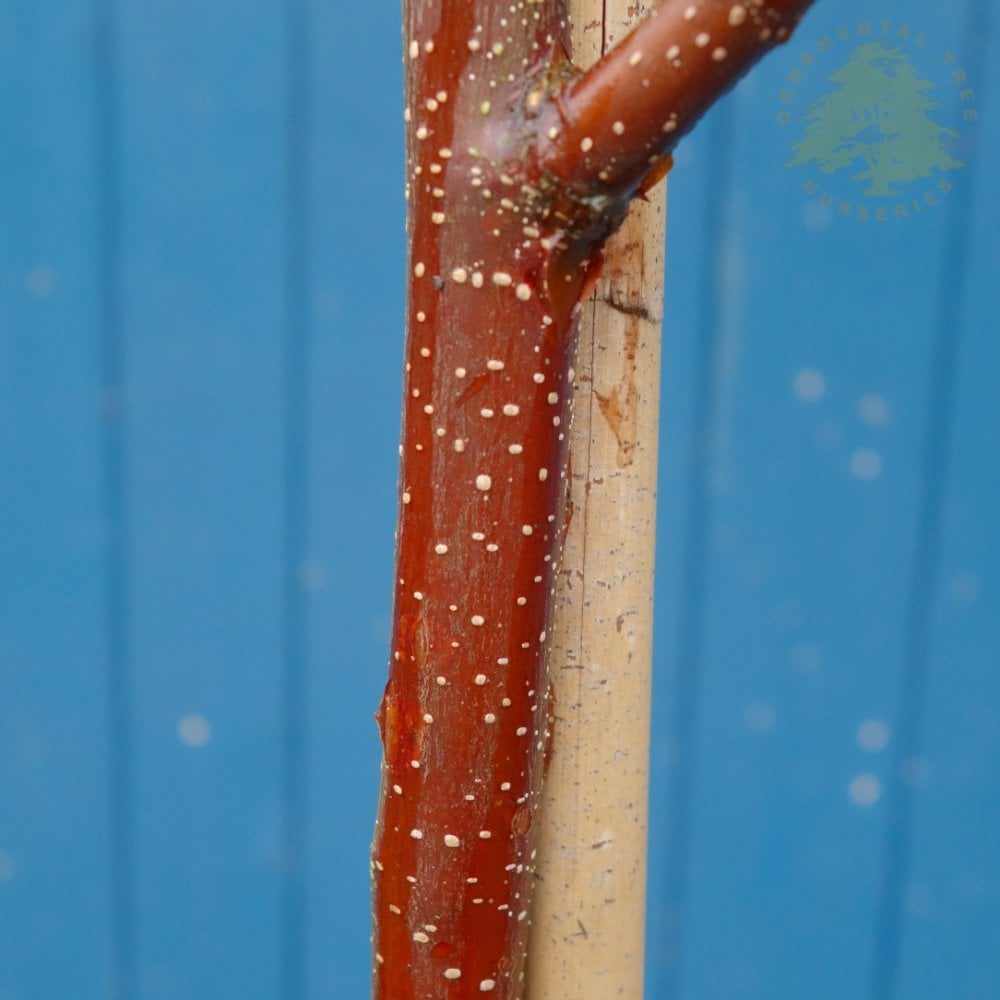Betula utilis 'Cinnamon' Tree
Betula utilis 'Cinnamon' Tree
Cinnamon Birch Trees
Single stem tree, 150-200cm, 12L pot
Ready by: 31 August 2025
Pre-order: Ready Summer 2025


Key features





Description
Betula utilis 'Cinnamon' is a beautiful birch, so-called because of the dark red-brown colour of its bark which appears on the tree from a young age. This exfoliating bark makes for excellent winter interest; the cinnamon colour contrasting wonderfully with the cream lenticel markings.
Green, slightly serrated foliage appears in summer, turning shades of golden yellow in the autumn. Catkins are produced in spring for added interest.
Betula utilis 'Cinnamon' is happily planted in most moist, well-drained soils, including clay. A full sun to partial shade position is ideal. Betula 'Cinnamon' will grow to form a slender and elegant habit of growth, reaching an approximate height and spread of 5 x 3 metres in 20 years (though it can reach taller heights in maturity).
| Small shrubs (1-3) | Young trees & 4+ small shrubs | Select semi-mature trees & shrubs (1-4) | All other mature trees (any quantity) | |
|---|---|---|---|---|
| Mainland UK ex. Scottish Highlands | £10 | £12 | £35 | from £55 |
| Scottish Highlands & the Islands | From £30 | |||
| Outside Mainland UK | Currently we are unable to deliver outside of Mainland UK | |||
Product Details
Key features





Description
Betula utilis 'Cinnamon' is a beautiful birch, so-called because of the dark red-brown colour of its bark which appears on the tree from a young age. This exfoliating bark makes for excellent winter interest; the...
Betula utilis 'Cinnamon' is a beautiful birch, so-called because of the dark red-brown colour of its bark which appears on the tree from a young age. This exfoliating bark makes for excellent winter interest; the cinnamon colour contrasting wonderfully with the cream lenticel markings.
Green, slightly serrated foliage appears in summer, turning shades of golden yellow in the autumn. Catkins are produced in spring for added interest.
Betula utilis 'Cinnamon' is happily planted in most moist, well-drained soils, including clay. A full sun to partial shade position is ideal. Betula 'Cinnamon' will grow to form a slender and elegant habit of growth, reaching an approximate height and spread of 5 x 3 metres in 20 years (though it can reach taller heights in maturity).
Planting & Care
Delivery Information
| Small shrubs (1-3) | Young trees & 4+ small shrubs | Select semi-mature trees & shrubs (1-4) | All other mature trees (any quantity) | |
|---|---|---|---|---|
| Mainland UK ex. Scottish Highlands | £10 | £12 | £35 | from £55 |
| Scottish Highlands & the Islands | From £30 | |||
| Outside Mainland UK | Currently we are unable to deliver outside of Mainland UK | |||
MORE TO GROW YOUR GARDEN















